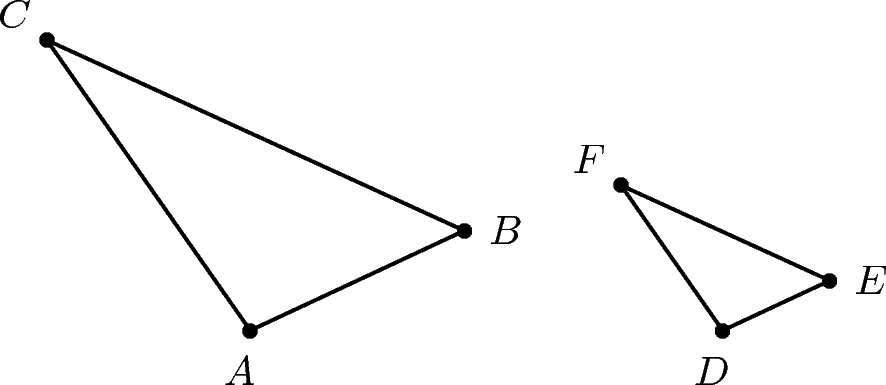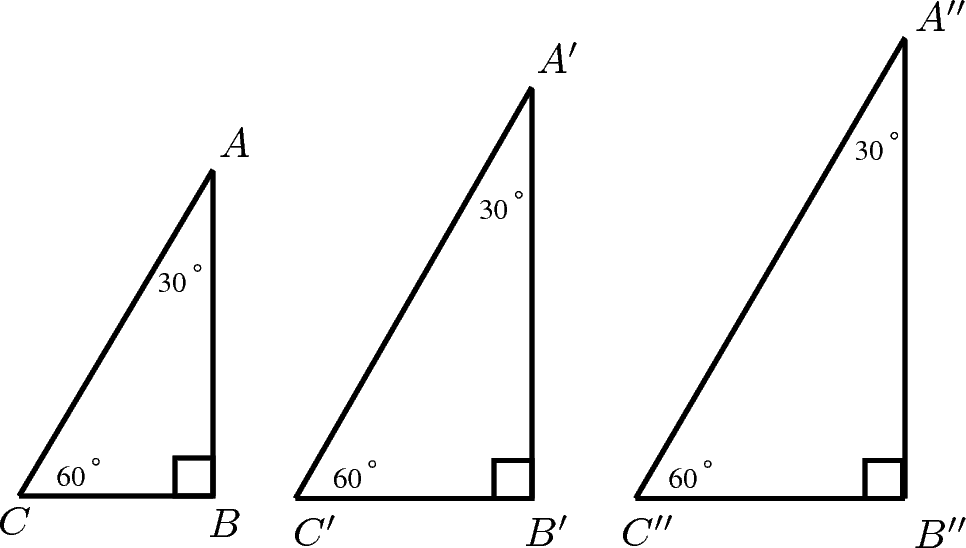| << Chapter < Page | Chapter >> Page > |
In geometry we learn about how the sides of polygons relate to the angles in the polygons, but we have not learned how to calculate an angle if we only know the lengths of the sides. Trigonometry (pronounced: trig-oh-nom-eh-tree) deals with the relationship between the angles and the sides of a right-angled triangle. We will learn about trigonometric functions, which form the basis of trigonometry.
Work in pairs or groups and investigate the history of the foundation of trigonometry. Describe the various stages of development and how the following cultures used trigonometry to improve their lives.
The works of the following people or cultures can be investigated:
You should be familiar with the idea of measuring angles from geometry but have you ever stopped to think why there are 360 degrees in a circle? The reason is purely historical. There are 360 degrees in a circle because the ancient Babylonians had a number system with base 60. A base is the number at which you add another digit when you count. The number system that we use everyday is called the decimal system (the base is 10), but computers use the binary system (the base is 2). so for them it made sense to have 360 degrees in a circle.
There are many applications of trigonometry. Of particular value is the technique of triangulation, which is used in astronomy to measure the distance to nearby stars, in geography to measure distances between landmarks, and in satellite navigation systems. GPSs (global positioning systems) would not be possible without trigonometry. Other fields which make use of trigonometry include astronomy (and hence navigation, on the oceans, in aircraft, and in space), music theory, acoustics, optics, analysis of financial markets, electronics, probability theory, statistics, biology, medical imaging (CAT scans and ultrasound), pharmacy, chemistry, number theory (and hence cryptology), seismology, meteorology, oceanography, many physical sciences, land surveying and geodesy, architecture, phonetics, economics, electrical engineering, mechanical engineering, civil engineering, computer graphics, cartography, crystallography and game development.
Select one of the fields that uses trigonometry from the list given above and write a 1-page report describing how trigonometry is used in the field that you chose.
If is similar to , then this is written as:

Then, it is possible to deduce ratios between corresponding sides of the two triangles, such as the following:
The most important fact about similar triangles and is that the angle at vertex A is equal to the angle at vertex D, the angle at B is equal to the angle at E, and the angle at C is equal to the angle at F.
In your exercise book, draw three similar triangles of different sizes, but each with ; and . Measure angles and lengths very accurately in order to fill in the table below (round answers to one decimal place).

| Dividing lengths of sides (Ratios) | ||
What observations can you make about the ratios of the sides?
These equal ratios are used to define the trigonometric functions.
Note: In algebra, we often use the letter for our unknown variable (although we can use any other letter too, such as , , , etc). In trigonometry, we often use the Greek symbol for an unknown angle (we also use , , etc).

Notification Switch
Would you like to follow the 'Siyavula textbooks: grade 10 maths [caps]' conversation and receive update notifications?